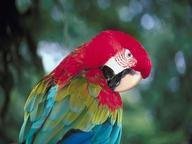Quiz Answer Key and Fun Facts
1. Parrots are part of the Psittacorpssera group of birds. Roughly how many species of different parrots are in this grouping?
2. If I wanted to see parrots in the wild, what would be a really bad travel destination?
3. Almost one third of all species of parrot are classified as endangered and at risk of extinction.
4. What do most parrots eat in the wild?
5. Roughly what percentage of parrots live in captivity?
6. If I am looking for a really large parrot, what type should I choose?
7. Some species of parrot have lived in the United States.
8. Most species of parrot have two toes in front, two toes in back. What fancy word do scientists use to describe this arrangement?
9. Which of these is NOT true about parrots?
10. When is World Parrot Day celebrated?
Source: Author
parrotman2006
This quiz was reviewed by FunTrivia editor
rossian before going online.
Any errors found in FunTrivia content are routinely corrected through our feedback system.
